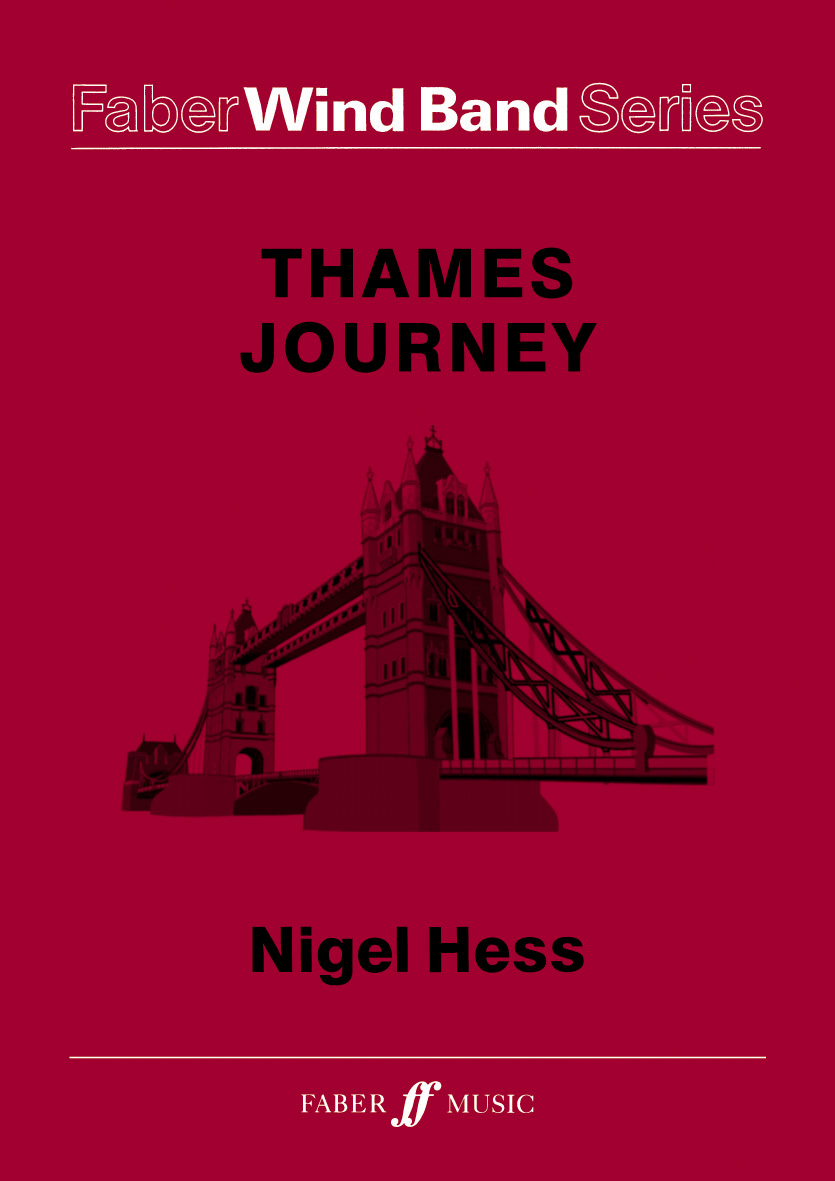Results
-
£5.95
I Vow to Thee, My Country - Score only - Gustav Holst
Program NotesGustav Holst's orchestral suite The Planets is perhaps his best known and most popular composition. The them in the central section of the movement Jupiter was adapted by the composer himself to fit the words of the song and has subsequently found its way into use as a hymn tune under the title Thaxted (named after the Essex town where the composer lived).Ray Steadman-Allen's arrangement of the tune for brass band was published by The Salvation Army in 1998. That arrangement has now been transcribed for wind band by Brian Bowen. It can be effectively used as a stand-alone concert item or as a song accompaniment for either choir or audience.
Estimated dispatch 7-14 working days
-
£65.00
A Thames Journey - Nigel Hess
A Thames Journey is a 10-minute work which follows the journey of the river Thames, from its origins as a few drops of water in Wiltshire to the point where it meets the open sea. Hess draws upon many musical links along the Thames, such as an old Wiltshire melody, morris dancing in Oxfordshire, boating songs from Berkshire. With such rich and diverse sources of music across several counties and centuries, this has quite understandably become one of Hess's most popular wind band works to date.
In stock: Estimated delivery 1-3 days
-
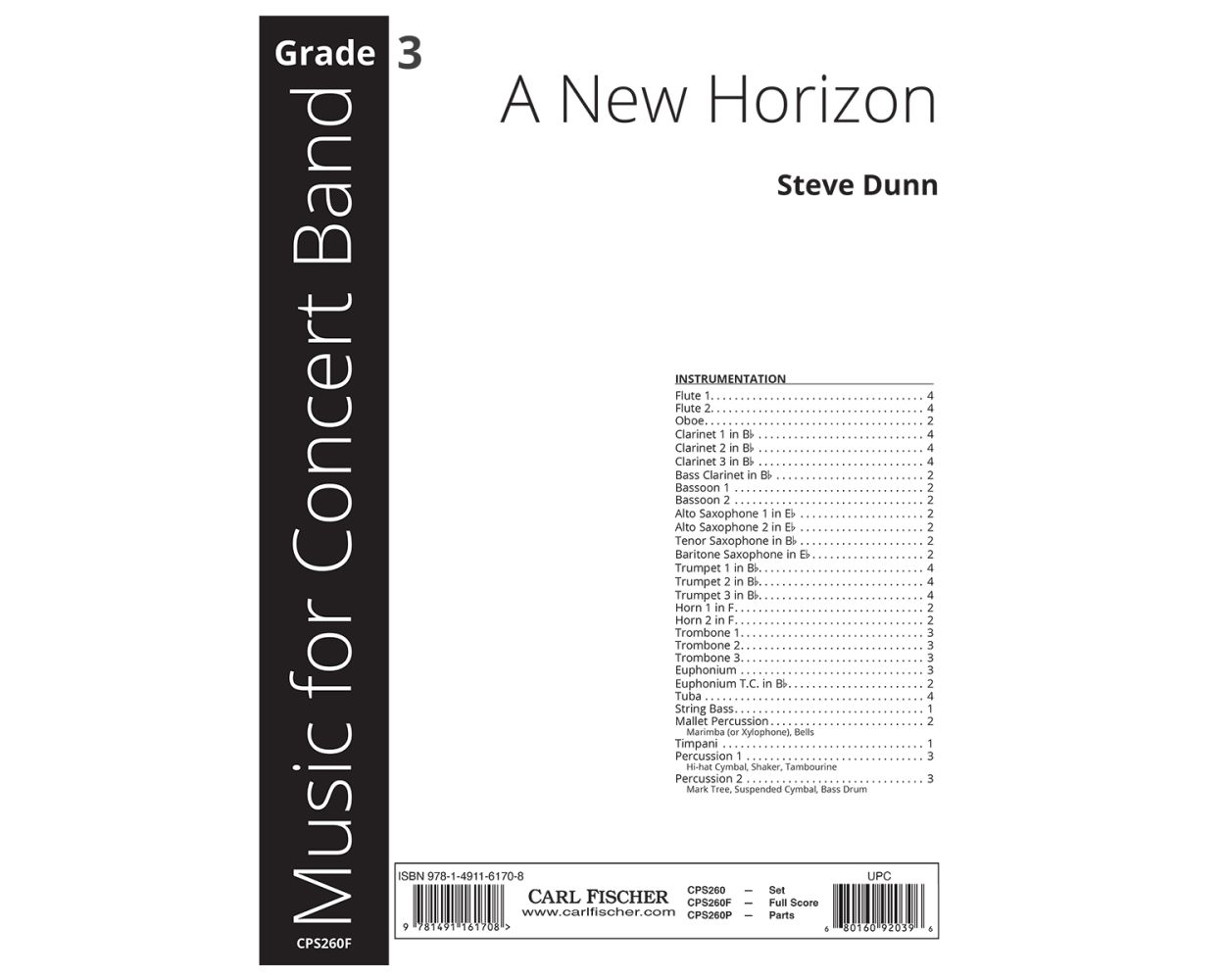 £64.00
£64.00A New Horizon
A New Horizon was composed for the 2021 University of Mobile High School Honor Band during its most challenging season in memory, and contains dynamic swells, subito changes, and crisp articulations. The title of this joyful, upbeat piece is a reminder that hope remains and we should keep our eyes on the future: a new horizon.
Estimated dispatch 12-14 working days
-
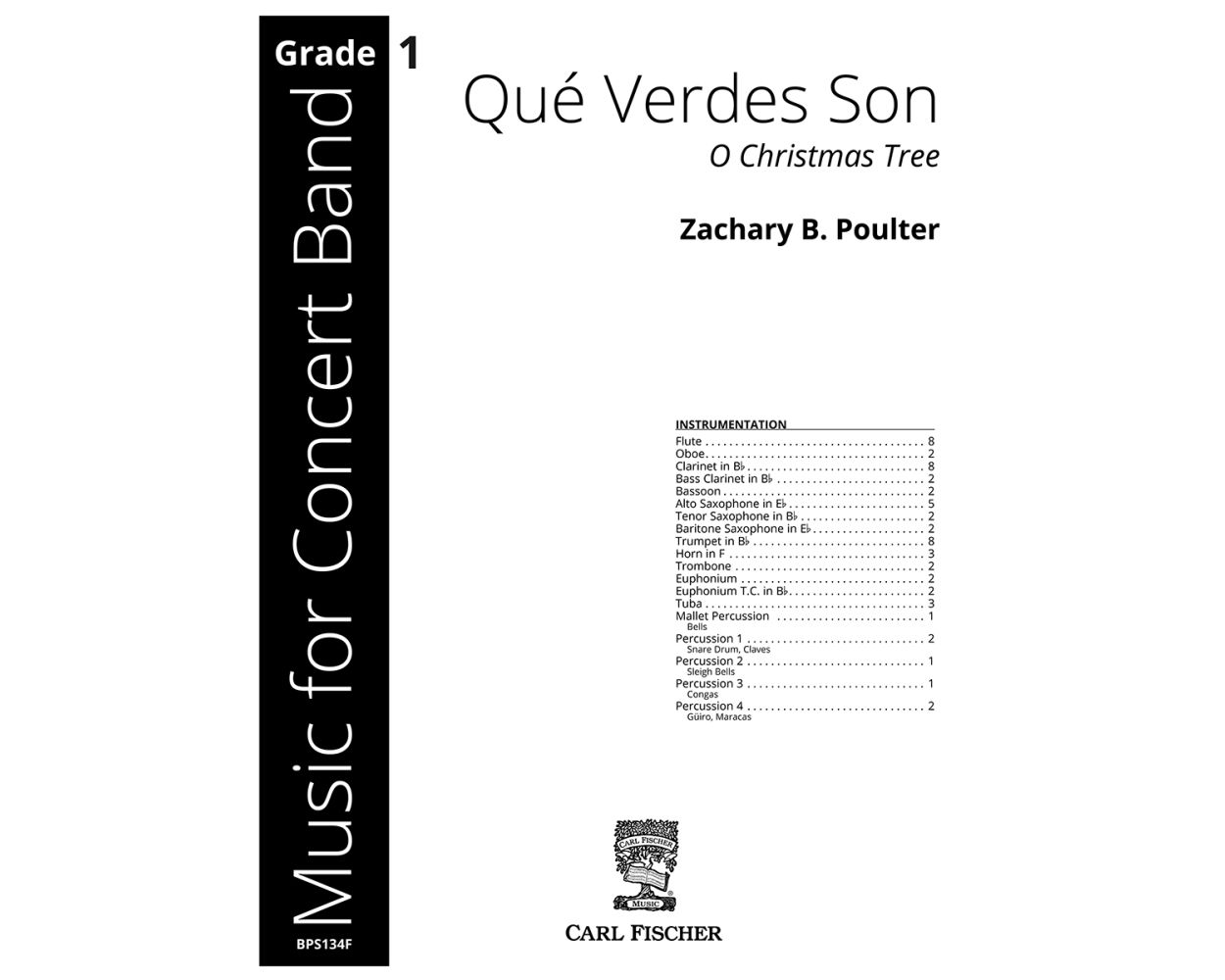 £40.00
£40.00Qu Verdes Son
Beginning with simmering Latin percussion this energetic, rhythmic arrangement of O Tannenbaum, explores the beauty and meaning of one of the holiday's most beloved symbols: the Christmas tree. Qu Verdes Son, the Spanish-language version, celebrates the tree's beautiful lights, fresh aroma, and especially, its lovely color. Playable by beginning students who only know the first 6 notes of the Bb scale, this will be an audience and student favorite!
Estimated dispatch 12-14 working days
-
 £71.00
£71.00Onward-Upward (March) - Edwin Franko Goldman
A delightful example of the Goldman style at its most infectious, this concert edition by Edward Lisk will make this charmer from the early 1930s available for a new generation of performers and listeners. Edwin Franko Goldman (1878-1956), who founded the Goldman band in 1918, was one of the great bandsmen who was inspired by the example of John Philip Sousa in creating the modern marching band repertoire.
Estimated dispatch 12-14 working days
-
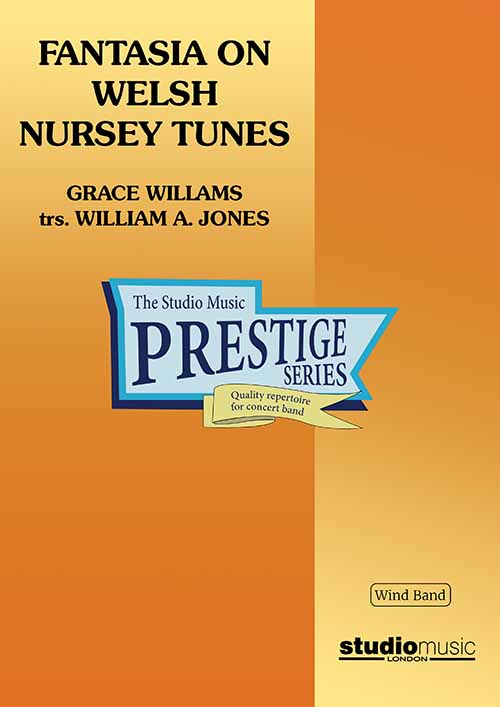 £124.95
£124.95Fantasia on Welsh Nursery Tunes (Concert Band - Score and Parts) - Williams, Grace - Jones, William A.
Grace Williams (1906 - 1977) from Barry, South Wales, was Wales finest composer. She studied composition at the Royal College of Music with Ralph Vaughan Williams and completed the Fantasia on Welsh Nursery Tunes in 1940. The iconic Fantasia, - her most popular work, which brought her to prominence - is a composition for symphonic orchestra based on traditional Welsh nursery tunes and lullabies.It is a light-hearted musical journey through childhood in eight traditional tunes. The jubilant start to the work is echoed in the finale, with a calmer, but effectively scored middle section.The Fantasia was featured in the 2024 Last Night of the Proms. This first Wind Band arrangement received its world premiere by Chalfont Wind Band April 1 2023.Melodies used include:There's Mam coming (Dacw Mam yn Dwad)The Bittern (Deryn y Bwn)Migildi, Magildi (nonsense words imitating the sound of a hammer on an anvil)Sleep my baby (Si lwli mabi)Gee-up, little horse (Gee Ceffyl Bach)Sleep, my pretty child) (Cysga Di, Fy Mhlentyn Tlws)Where are you going, my pretty maid? (Yr Eneth Ffein Ddu)Summer Katie (Cadi Ha)Duration: 11 minutes
Estimated dispatch 7-14 working days
-
 £24.95
£24.95Fantasia on Welsh Nursery Tunes (Concert Band - Score only) - Williams, Grace - Jones, William A.
Grace Williams (1906 - 1977) from Barry, South Wales, was Wales finest composer. She studied composition at the Royal College of Music with Ralph Vaughan Williams and completed the Fantasia on Welsh Nursery Tunes in 1940. The iconic Fantasia, - her most popular work, which brought her to prominence - is a composition for symphonic orchestra based on traditional Welsh nursery tunes and lullabies.It is a light-hearted musical journey through childhood in eight traditional tunes. The jubilant start to the work is echoed in the finale, with a calmer, but effectively scored middle section.The Fantasia was featured in the 2024 Last Night of the Proms. This first Wind Band arrangement received its world premiere by Chalfont Wind Band April 1 2023.Melodies used include:There's Mam coming (Dacw Mam yn Dwad)The Bittern (Deryn y Bwn)Migildi, Magildi (nonsense words imitating the sound of a hammer on an anvil)Sleep my baby (Si lwli mabi)Gee-up, little horse (Gee Ceffyl Bach)Sleep, my pretty child) (Cysga Di, Fy Mhlentyn Tlws)Where are you going, my pretty maid? (Yr Eneth Ffein Ddu)Summer Katie (Cadi Ha)Duration: 11 minutes
Estimated dispatch 7-14 working days
-
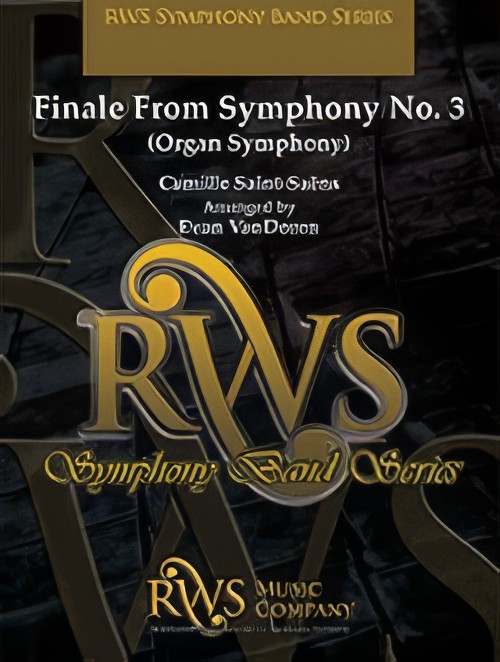 £150.00
£150.00Symphony No.3, Finale from (Organ Symphony) (Concert Band - Score and Parts) - Saint-Saens, Camille - VanDoren, Evan
The Finale to Saint-Saens' 3rd Symphony (with Organ) is a shimmering, sparkling explosion of color that stands out among the classical repertoire as one of its most exciting endings! Evan VanDoren has masterfully captured Saint-Saens' unique compositional color and style, adjusting the key for maximum playability, while staying true to the original work! Duration: 8.00
Estimated dispatch 7-14 working days
-
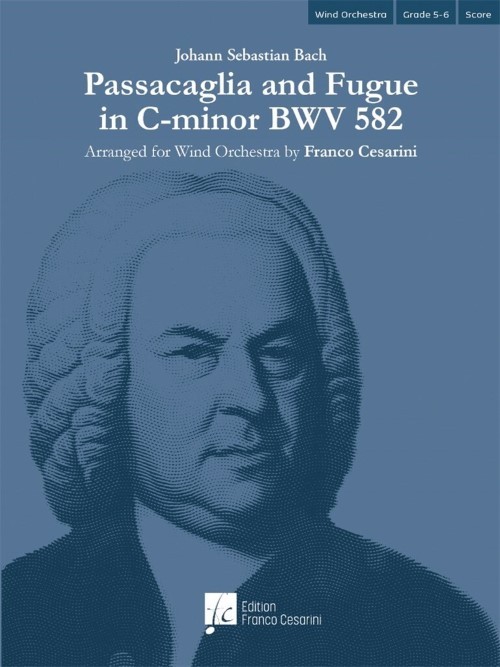 £171.00
£171.00Passacaglia and Fugue in C minor BWV 852 (Concert Band - Score and Parts) - Bach, Johann Sebastian - Cesarini, Franco
The Passacaglia is a set of instrumental variations based on an ostinato bass. Bach's Passacaglia and Fugue in C-minor for organ represents the pinnacle of what had been achieved in this compositional form at that time. In Franco Cesarini's arrangement for large wind orchestra, the particularly careful interpretation of the original piece enables him to exploit all the sound colors at his disposal, and in this sumptuous guise Bach's work also takes on a grandiose dimension, albeit tinged with late-Romanticism. The exposition of the beautiful theme begins in the bass part, immediately creating a solemn and serious atmosphere which is accentuated by the intensely pathetic character of the first variations. Up to the tenth variation it remains confined to the bass, but in subsequent ones it also passes to the soprano and alto register. The integrity of the theme is also embellished with elegant arpeggios, in whose lower and higher extensions the theme can be distinguished. Towards the end it returns to the bass in an impressive thickening of the polyphonic texture that swiftly re-establishes the key of C-minor. The "Thema fugatum" which follows immediately does not constitute a Fugue in its own right, rather it is nothing but the twenty-first and most extensive variation of the Passacaglia. This time Bach uses only the first half of the theme, superimposing a rhythmic countersubject that considerably enlivens the entire development of the composition. The polyphonic discourse becomes increasingly dense, until the building tension peaks in a powerful "Neapolitan sixth" chord, followed by a sudden pause. This culminating moment then leads to the coda and final cadence on a bright C-major chord. Duration: 12.45
Estimated dispatch 7-14 working days
-
 £119.99
£119.99Hermitage (Concert Band - Score and Parts) - De Haan, Jan
Concertante Variations on an original theme after Pyotr Ilyich TchaikovskyJan de Haan drew inspiration for this work from five paintings exhibited in The Hermitage in Saint Petersburg, one of the largest and most versatile museums in the world. He used the melodious Andante cantabile from the String Quartet Op. 11 by the Russian composer Pyotr Ilyich Tchaikovsky as its starting point. Thus, he created his own musical painting, which is just as varied as the underlying canvases, from Cheerful Company by Dirck Hals to Dance II by Henri Matisse. A true work of art!Duration: 13.30
Estimated dispatch 7-14 working days

